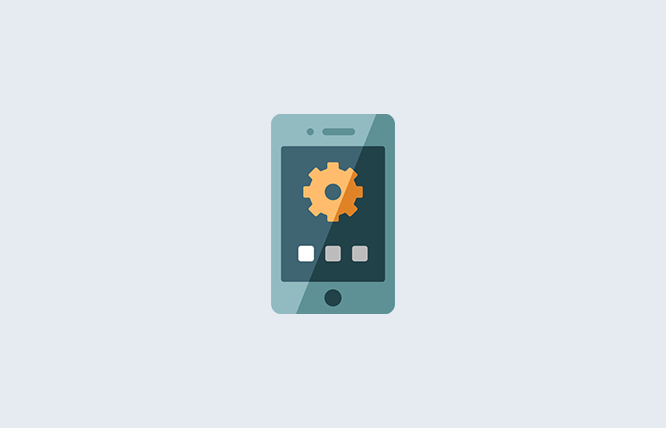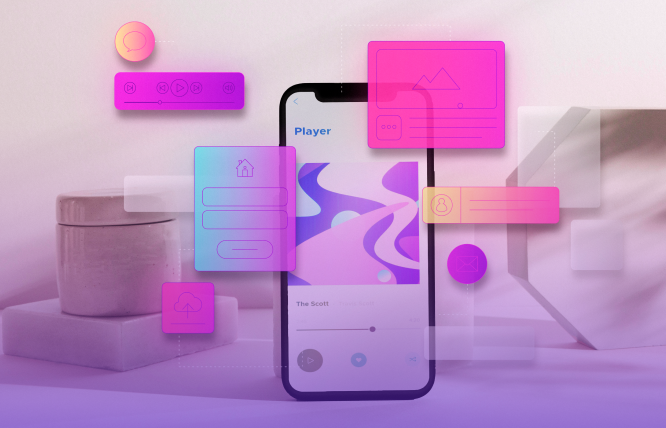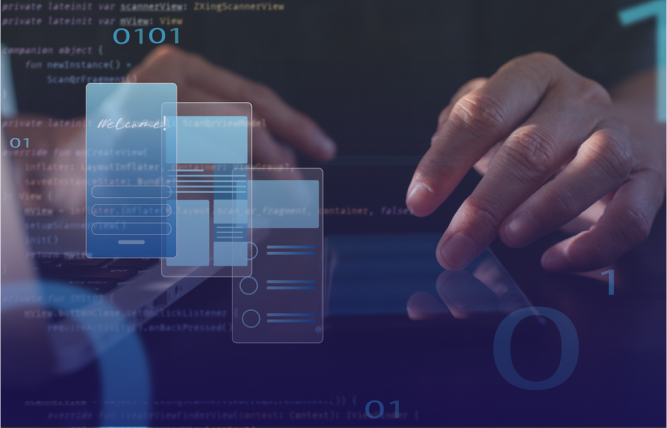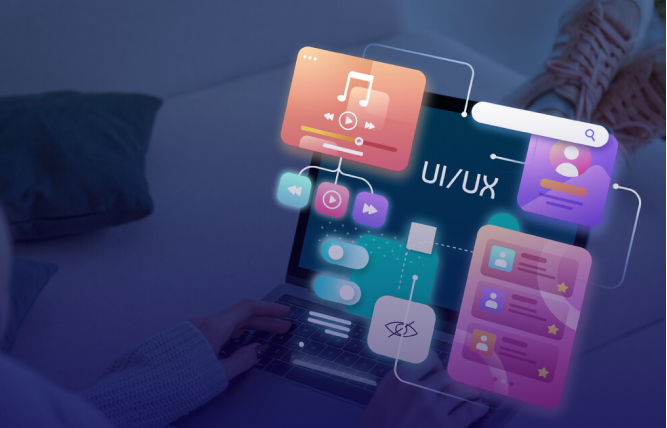Mobile apps reign supreme in today’s digital world, and so does the factor of app maintenance to keep your app functionally effective. However, the spotlight often falls on the development and deployment phase of app development; the real journey extends far beyond app development.
Mobile App Maintenance Cost-Benefit Analysis in 2025
A resilient and successful app demands a strategic plan for ongoing maintenance, akin to the care we bestow upon our gadgets and machines. This involves vigilant monitoring of performance metrics and the continuous delivery of upgrades to ensure users experience the highest quality of service.Like hardware, software (apps) also requires maintenance, and that comes with a cost. Well, most of us neglect this crucial aspect of mobile app maintenance, which can lead to dissatisfied users, ultimately resulting in them uninstalling the app.
Statistics show growth in new mobile apps entering the store, but the removal of obsolete apps also raises concerns. In this blog, we explore the cost-benefit analysis of mobile app maintenance in 2025. It’s a journey through the complexities of sustaining a successful app in a community marked by innovation, user expectations, and the ever-evolving digital landscape.
What is App Maintenance Cost?
App maintenance costs include the expense needed to upscale the functionality and efficiency of a mobile application. App maintenance comes after the initial development phase and includes expenses associated with regular updates, bug fixes, security enhancements, and other activities aimed at sustaining optimal user experience.
A number of variables, including the app’s size and complexity, as well as the frequency of updates, can significantly affect the total cost of app maintenance. Generally, you should expect to spend around 15-20% of your initial development cost on ongoing maintenance per year.
The Significance of Mobile App Maintenance
The significance of maintaining a mobile app cannot be overstated in today’s competitive digital landscape. Let’s find out the core reasons why maintaining an app is important:
Enhancing User Experience
Enhancing user experience is one and foremost thing of app maintenance. Ongoing maintenance ensures users delight in a seamless, glitch-free experience, providing satisfaction and engendering loyalty.
Timely Bug Fixes and Updates
Regular maintenance enables the swift identification and correction of bugs. It also facilitates the implementation of necessary updates to keep the app aligned with evolving standards and user expectations.
Fortifying Security
Regular maintenance plays a crucial role in fortifying the app’s security; it keeps your data safe from hackers. Security helps in the long-run success of your app, so taking it lightly would be a bad idea.
Optimising Performance
Continuous monitoring and fine-tuning contribute to the optimisation of the app’s performance. Optimisation prevents slowdowns or crashes that could otherwise lead to user dissatisfaction.
Staying Competitive in a Crowded Market
Amidst a sea of apps, staying competitive necessitates keeping your app agile and future-proof. Therefore, continuous evaluation and the addition of modern features guarantee user satisfaction and market relevance.
Ensuring Platform Compatibility
With mobile platforms continually evolving, ongoing maintenance is essential to ensure compatibility. This proactive measure prevents issues that may arise from platform updates, providing a satisfactory user experience.
User Retention
A well-maintained app with added features keeps users tied and less likely to switch to competitors. User retention includes adding engaging UI components, addressing the pain points, and providing an all-in-one type of interface.
These are a few of the many factors that affect the cost even after the app launch. Remember, launching is one thing, but keeping it competitive through regular maintenance requires investment, time, and resources.
Types of App Maintenance that You Might Need
App maintenance is a paramount factor, ensuring your mobile application stays up-to-date and performs optimally. However, depending on your app’s complexity and user needs, you might encounter different types of maintenance.
Here’s a breakdown:
| Type of App Maintenance | When You Need It | How We Rectify It | Costs |
Corrective Maintenance | When bugs impact functionality. | Address and fix reported issues. | Variable, depending on issue complexity. |
Adaptive Maintenance | With each new OS release or device introduction. | Adjust the app to changes in the environment (OS updates, new devices). | Moderate, varies based on the scale of adjustments. |
Perfective Maintenance | To stay competitive or meet evolving user expectations. | Enhance the app by adding or improving features based on user feedback. | Moderate to High, based on the scope of enhancements. |
Preventive Maintenance | Periodically to reduce the risk of future problems. | Proactively identify potential issues and fix them to ensure long-term stability. | Low to Moderate, depending on the depth of preventive measures. |
Security Maintenance | Regularly, to stay ahead of evolving cybersecurity threats. | Focus on identifying and fixing vulnerabilities to protect user data. | Moderate to High, depending on the level of security measures. |
Technical Debt Management | Periodically to prevent long-term issues. | Address accumulated technical debt, improve outdated code or design choices. | Moderate to High, depending on the scale of improvements. |
Performance Monitoring and Optimisation | Continuously to prevent slowdowns and crashes. | Closely monitor performance metrics and fine-tune for optimal speed. | Low to Moderate, ongoing for continuous optimization. |
Factors Affecting the Cost of Maintaining an App
Maintaining an app revolves around various factors that contribute to the overall cost. You must have an understanding of these factors to create realistic budgets. Here are key elements influencing the cost of maintaining an app:
App Complexity
Highly complex apps with intricate features and functionalities generally require more extensive maintenance. Obviously, higher complexity often translates to increased development time and maintenance costs.
Technology Stack
The choice of tech stack and frameworks affects the cost of maintenance. Using modern or uncommon technologies may lead to higher maintenance expenses. It’s important to consider these factors when making decisions about app development to avoid potential costs in the future.
Device and Platform Diversity
Usually, multiple devices and platforms require adapting the app to various screen sizes and operating systems. So the maintenance costs increase as compatibility across a broader range of devices is maintained.
Third-Party Integrations
Third-party integration is the major element that contributes to ongoing maintenance expenses. Apps integrating with external services or APIs need continuous monitoring and updates and take up a big chunk of overall investment.
User Base and Scaling
As the user base grows, maintenance requirements, such as server capacity and performance optimisation, may increase. Scaling infrastructure for the long run to accommodate a larger user base can contribute to maintenance costs.
How Can You Minimise the App Maintenance Costs
Minimising app maintenance costs is a strategic endeavour that requires proactive planning and efficient management. You need to be proficient or have a technical team alongside to minimise the costs associated with app maintenance to keep your app up and running.
Here are practical approaches to help you reduce app maintenance costs:
Strategic Planning
Conduct regular assessments to identify potential issues and plan maintenance activities strategically. It would be a good practice to develop a roadmap for updates and feature enhancements, allowing for systematic planning and cost optimisation.
Automated Testing
It’s important to find and fix problems early. You can do this by testing the app automatically and continuously. Also, try using the app on different devices to make sure new updates don’t cause any problems.
Streamlined Bug Tracking
Create and utilise a centralised bug tracking system to efficiently manage reported issues and prioritise them based on severity and impact. Conduct regular audits of bug reports to identify recurring issues and implement permanent solutions.
Optimised Infrastructure
Optimise your app’s infrastructure for scalability to handle growth efficiently without incurring unnecessary costs. Make use of cloud services for flexibility and cost-effective scaling based on demand.
User Feedback Loop
Have a user feedback loop to gather insights about their experiences and identify areas for improvement. Prioritise features and updates based on user feedback to focus on what matters most to your user base.
Long-Term Planning
Stay ahead of the competitors by future-proofing your app with the technology trends and planning for upcoming changes. Build an architecture that allows for easy adaptation to evolving technologies.
Wrapping Up!
You now have the complete ins and outs of keeping your mobile app active and thriving by all means. Remember, neglecting app maintenance can lead to unhappy users who might say goodbye to your app.
As we step into 2025, understanding the costs and benefits of keeping your app well-maintained is equally important as developing. You now know how regular updates, fixing bugs, and staying secure can improve the app.
So, whether you’re an app owner or just planning to build one, knowing the ropes of mobile app maintenance is a win-win. It ensures that your apps stay agile and that you get the best experience possible. Here’s to a well-maintained and thriving app world in 2025! Cheers!
Frequently Asked Questions
Well, the cost can vary based on factors like your app’s complexity and the services you need. It depends on the features, platform, technology stack, and trends.
Several factors impact app maintenance costs, including the application architecture, complexity, the scale of the user base, the need for regular updates, bug fixes, and the implementation of security measures. Each of these factors contributes to the overall expenditure.
Effective and accurate budgeting for app maintenance involves a detailed analysis of ongoing needs, such as regular updates, bug fixes, and miscellaneous costs. It requires forecasting these requirements based on expected growth, allowing for a proactive and strategic financial plan.
App maintenance services offer several technical advantages, including regular bug fixes to enhance stability, updates to introduce new features and improvements, security measures to protect against vulnerabilities, and overall performance optimisation. Maintenance services contribute to an engaged user experience and ensure the app stays competitive.
Utilise agile practices such as regular security audits, encryption protocols, and timely patching of vulnerabilities. Stay compliant with regulations, continuously monitor industry standards and adapt the app’s features and security measures accordingly. Additionally, incorporating secure coding practices during development is crucial for long-term compliance.
Have questions or feedback?
Get in touch with us and we‘l get back to you and help as soon as we can!




